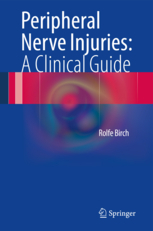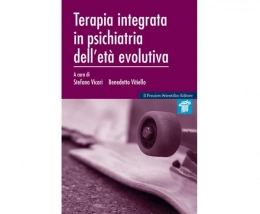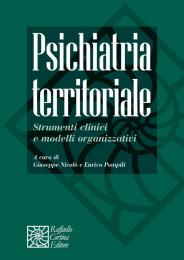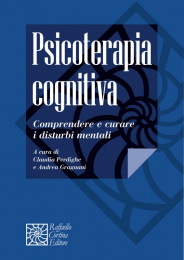Non ci sono recensioni
- Complete with full color illustrations
- Written by a leading expert in the field
- Contains new knowledge about the molecular and cellular events which underlie the response of nerves to injury, regeneration and neuropathic pain
Peripheral Nerve Injuries: A Clinical Guide is a fully illustrated and informative reference on injuries within the peripheral nervous system. It incorporates new knowledge in molecular and cellular events which underlie the response of nerves to injury, regeneration and neuropathic pain.
Written by a leading expert in the field, Peripheral Nerve Injuries: A Clinical Guide, is a valuable resource for surgeons in residence and training.
Contents
1 The Peripheral Nervous System: Anatomy and Function ................ 1
1.1 The Cranial Nerves ........................................................................ 4
1.2 The Spinal Nerves ......................................................................... 5
1.2.1 The Anterior Primary Rami .............................................. 5
1.2.2 Thoracic Anterior Primary Rami ...................................... 9
1.2.3 Lumbar and Sacral Anterior Primary Rami ...................... 10
1.2.4 The Posterior Primary Rami ............................................. 18
1.3 The Autonomic Nervous System ................................................... 20
1.3.1 The Sympathetic System .................................................. 21
1.3.2 The Parasympathetic Nervous System ............................. 23
1.4 Nerves at Risk from Musculo Skeletal Injury ............................... 25
1.5 The Neurone .................................................................................. 33
1.5.1 The Neurotrophins ............................................................ 34
1.6 The Nerve Fibre ............................................................................. 38
1.6.1 The Axon .......................................................................... 40
1.6.2 Axonal Transport .............................................................. 40
1.6.3 The Glial Cells of the Peripheral Nervous System ........... 42
1.6.4 The Myelin Sheath ............................................................ 43
1.6.5 Conduction ........................................................................ 44
1.6.6 The Basis of the Action Potential: Ion Channels .............. 46
1.7 The Peripheral Nerve Trunk .......................................................... 47
1.7.1 The Connective Tissue Sheaths ........................................ 48
1.7.2 Topographical Organisation .............................................. 48
1.7.3 The Blood Supply of Nerves ............................................ 50
1.7.4 The Nervi Nervorum ......................................................... 51
1.8 Changes in Nerves with Aging ...................................................... 51
1.9 The Somatic Motor System ........................................................... 51
1.10 The Somatic Sensory System ........................................................ 53
1.10.1 Cutaneous Sensibility ....................................................... 54
1.10.2 The Skin ............................................................................ 55
vi Contents
1.10.3 Cutaneous Sensory Receptors ........................................... 56
1.10.4 Deep Sensibility ................................................................ 58
1.10.5 Central Connections .......................................................... 60
1.10.6 Afferent Autonomic Pathways .......................................... 62
1.11 Synaptic Activity ........................................................................... 64
References ............................................................................................... 65
2 Reactions to Injury ............................................................................... 69
2.1 Conduction Block: Neurapraxia .................................................... 72
2.1.1 Transient Ischaemia .......................................................... 72
2.1.2 Conduction Block in Myelin Deformation
and Focal Demyelination ................................................ 73
2.1.3 The Conduction Block of War Wounds ............................ 74
2.2 The Degenerative Lesion ............................................................... 75
2.2.1 The Cell Body and Proximal Stump ................................. 75
2.2.2 The Distal Stump .............................................................. 78
2.2.3 Contralateral Effects ......................................................... 79
2.3 The Special Case of the Brachial Plexus ....................................... 82
2.4 Types of Lesion Produced by Different Physical Agents .............. 84
2.4.1 Acute Ischaemia ................................................................ 85
2.4.2 Ischaemia from Tamponade .............................................. 86
2.4.3 Ischaemia and Acute Compression Within
Neurovascular Fascial Compartments ............................ 89
2.4.4 Ischaemia by Acute Compression from Swollen
Muscle ............................................................................. 90
2.4.5 Ischaemia Caused by Traction .......................................... 93
2.4.6 Compression: Acute .......................................................... 95
2.4.7 Crush ................................................................................. 96
2.4.8 Traction ............................................................................. 98
2.4.9 Thermal Injury .................................................................. 101
2.4.10 Electric Shock ................................................................... 102
2.4.11 Injection Injury ................................................................. 105
2.4.12 Vibration Injury ................................................................ 107
2.4.13 Radiation and Peripheral Nerves ...................................... 107
References ............................................................................................... 109
3 Regeneration and Recovery of Function ............................................ 113
3.1 The Response of the Nerve and Axon to Transection ................... 114
3.1.1 The Schwann Cells ........................................................... 115
3.1.2 The Axon .......................................................................... 115
3.1.3 Reorganisation into “Mini Fascicles” ............................... 116
3.1.4 Guidance and Selection .................................................... 116
3.1.5 Maturation ......................................................................... 118
3.1.6 The Rate of Regeneration ................................................. 118
Contents vii
3.2 Regeneration of End-Organs ......................................................... 119
3.2.1 The Cutaneous Sensory Receptors ................................... 119
3.3 Regeneration After Intradural Injury ............................................. 120
3.4 The Repair of Large Gaps ............................................................. 122
3.5 Complications of Regeneration ..................................................... 123
3.5.1 Muscle Function ............................................................... 123
3.5.2 Pain ................................................................................... 124
3.6 Recovery of Function After Nerve Repair ..................................... 126
3.6.1 Duration of Study: Records .............................................. 127
3.6.2 Grading of Results ............................................................ 128
3.7 Factors Governing Prognosis ......................................................... 136
3.7.1 Severity of Injury .............................................................. 136
3.7.2 Delay ................................................................................. 137
3.7.3 Other Factors in Prognosis ................................................ 138
3.8 Conclusion ..................................................................................... 140
References ............................................................................................... 140
4 Clinical Aspects of Nerve Injury ......................................................... 143
4.1 The History: Characteristics of the Wound ................................... 143
4.2 Associated Symptoms and Signs ................................................... 146
4.2.1 Examination ...................................................................... 147
4.3 Recognition of the Level and the Depth of Injury ......................... 149
4.3.1 Level ................................................................................. 149
4.3.2 Depth ................................................................................. 152
4.4 Signs .............................................................................................. 154
4.5 Tinel’s Sign .................................................................................... 157
4.5.1 Eliciting the Tinel Sign in Closed Lesions ....................... 160
4.5.2 Tinel’s Sign and Recovery ................................................ 162
4.6 Examination of Sensibility ............................................................ 163
4.6.1 Quantitative Sensory Testing (QST) ................................. 167
4.7 Examination of Muscles ................................................................ 168
4.7.1 Some Pitfalls ..................................................................... 168
4.7.2 Measurement of Muscle Power ........................................ 169
4.8 Some Difficulties in Diagnosis ...................................................... 171
4.8.1 Thoraco Scapular, Thoraco Humeral, and Scapulo
Humeral Muscles ............................................................ 172
4.8.2 The Hand .......................................................................... 178
4.8.3 The Lower Limb ............................................................... 179
4.9 Late Signs of Nerve Injury ............................................................ 180
4.10 The Diagnosis of Neuropathic Pain After Injury to a Nerve ......... 184
4.10.1 Allodynia .......................................................................... 185
4.10.2 Hyperpathia ....................................................................... 187
4.10.3 Deafferentation Pain ......................................................... 187
viii Contents
4.10.4 Clinical Assessment .......................................................... 188
4.10.5 Neuropathic Pain Syndromes............................................ 189
4.11 Aids to Diagnosis .......................................................................... 191
4.11.1 Neurophysiological Investigations (NPI) ......................... 191
4.11.2 High Resolution Ultrasonography .................................... 192
References ............................................................................................... 193
5 Operating on Peripheral Nerves .......................................................... 195
5.1 Indications and Objects of Intervention ......................................... 195
5.1.1 The Lessons of War .......................................................... 195
5.1.2 Timing: Nerve Lesions in Fractures
and Dislocations .............................................................. 196
5.2 General Principles of Operation .................................................... 198
5.2.1 Control of Bleeding .......................................................... 198
5.2.2 Preparation ........................................................................ 199
5.2.3 Prevention of Pain ............................................................. 200
5.2.4 Apparatus and Instruments ............................................... 200
5.2.5 Incisions: Handling of Tissues .......................................... 204
5.2.6 The Record ........................................................................ 206
5.3 Methods of Repair ......................................................................... 207
5.3.1 The Vascular Repair .......................................................... 207
5.3.2 The Nerve Operations ....................................................... 209
5.3.3 Biopsy ............................................................................... 211
5.4 The Nerve Repair ........................................................................... 214
5.4.1 Methods of Suture ............................................................. 217
5.4.2 Grafting ............................................................................. 219
5.4.3 Indications for and Methods of Nerve Transfer ................ 223
5.4.4 Other, Non Neural, Material for Grafts: Entubation ......... 229
5.4.5 Immobilisation .................................................................. 231
5.5 Approaches to Individual Nerves: Neck and Upper Limb ............ 234
5.5.1 The Transverse Supraclavicular Approach:
(Anterior, or Anterolateral) ............................................. 234
5.5.2 The Transclavicular Exposure .......................................... 239
5.5.3 The Postero-Lateral Route ................................................ 241
5.5.4 The Spinal Accessory Nerve............................................. 244
5.5.5 The Suprascapular Nerve .................................................. 245
5.5.6 The Infraclavicular Part of the Brachial Plexus ................ 245
5.5.7 The Circumflex Nerve ...................................................... 247
5.5.8 Median and Ulnar Nerves in the Arm and the Axilla ....... 247
5.5.9 The Radial Nerve .............................................................. 248
5.5.10 The Posterior Interosseous Nerve ..................................... 250
5.5.11 The Lower Part of the Median Nerve ............................... 251
5.5.12 The Lower Part of the Ulnar Nerve .................................. 254
Contents ix
5.6 Approaches to Individual Nerves: Abdomen, Pelvis
and Lower Limb .......................................................................... 255
5.6.1 The Lumbar Plexus ........................................................... 255
5.6.2 The Femoral Nerve ........................................................... 256
5.6.3 The Sciatic Nerve.............................................................. 257
5.6.4 The Tibial and Common Peroneal Nerves
in the Popliteal Fossa and Below .................................... 260
5.6.5 The Lower Tibial Nerve and the Plantar Nerves .............. 260
References ............................................................................................... 263




